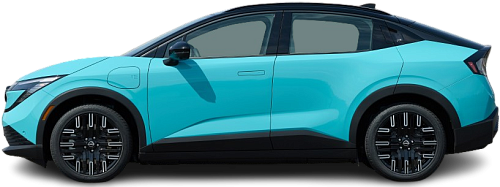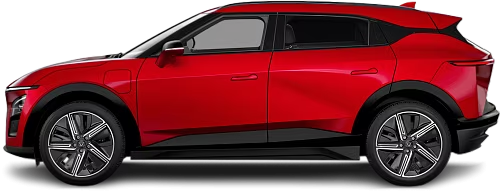Global EV Comparison: Nissan Leaf 75 kWh vs VinFast VF 7 Eco
Struggling to Decide? Let AI Help!
Your AI Summary Is Ready!
General Info
Although both vehicles have been announced, they are not yet in production and will not be available for sale in Europe.
The two vehicles share the same body style: SUV.
| Property | Nissan Leaf 75 kWh | VinFast VF 7 Eco |
|---|---|---|
| Years of Production | 2025-… | 2024-… |
| Current Status | Announced | Announced |
| Country of Manufacture | Japan, UK, USA | Vietnam |
| Body Style | SUV | SUV |
| Market Availability | EU, USA | USA |
| GCC Score | 5.9 | 5.5 |
Range and Efficiency
Even though the VinFast VF 7 Eco (2024-…) has a larger battery, the Nissan Leaf 75 kWh (2025-…) higher energy efficiency results in a longer real-world driving range.
| Property | Nissan Leaf 75 kWh | VinFast VF 7 Eco |
|---|---|---|
| Range (EPA) | 488 km | - Range (EPA) |
| Range (WLTP) | - Range (WLTP) | 450 km |
| Range (GCC) | 464 km | 383 km |
| Battery Capacity (Nominal) | 75 kWh | 79 kWh |
| Battery Capacity (Usable) | 71.2 kWh | 75.3 kWh |
| Efficiency per 100 km | 15.3 kWh/100 km | 19.7 kWh/100 km |
| Efficiency per kWh | 6.52 km/kWh | 5.09 km/kWh |
| Range and Efficiency Score | 8.4 | 6 |
Charging
Both vehicles utilize a standard 400-volt architecture.
The Nissan Leaf 75 kWh (2025-…) offers faster charging speeds at DC stations, reaching up to 150 kW, while the VinFast VF 7 Eco (2024-…) maxes out at 100 kW.
The VinFast VF 7 Eco (2024-…) features a more powerful on-board charger, supporting a maximum AC charging power of 11 kW, whereas the Nissan Leaf 75 kWh (2025-…) is limited to 7.2 kW.
| Property | Nissan Leaf 75 kWh | VinFast VF 7 Eco |
|---|---|---|
| Max Charging Power (AC) | 7.2 kW | 11 kW |
| Max Charging Power (DC) | 150 kW | 100 kW |
| Architecture | 400 V | 400 V |
| Charge Port | CCS Type 2 | CCS Type 2 |
| Charging Score | 5.1 | 6 |
Performance
Both vehicles are front-wheel drive.
The Nissan Leaf 75 kWh (2025-…) boasts greater motor power and accelerates faster from 0 to 100 km/h.
| Property | Nissan Leaf 75 kWh | VinFast VF 7 Eco |
|---|---|---|
| Drive Type | FWD | FWD |
| Motor Type | PMSM | PMSM |
| Motor Power (kW) | 160 kW | 150 kW |
| Motor Power (hp) | 214 hp | 201 hp |
| Motor Torque | 354 Nm | 310 Nm |
| 0-100 km/h | 7.1 s | 10 s |
| Top Speed | 157 km/h | 150 km/h |
| Performance Score | 3.7 | 3 |
Dimensions
The VinFast VF 7 Eco (2024-…) is longer, wider, and taller.
The VinFast VF 7 Eco (2024-…) boasts a more extended wheelbase.
| Property | Nissan Leaf 75 kWh | VinFast VF 7 Eco |
|---|---|---|
| Length | 4405 mm | 4545 mm |
| Width (with Mirrors) | 2099 mm | 2167 mm |
| Width (w/o Mirrors) | 1810 mm | 1890 mm |
| Height | 1557 mm | 1636 mm |
| Wheelbase | 2690 mm | 2840 mm |
Cargo and Towing
Neither car is equipped with a frunk (front trunk).
Neither vehicle is officially rated for towing in in the EU.
| Property | Nissan Leaf 75 kWh | VinFast VF 7 Eco |
|---|---|---|
| Number of Seats | 5 | 5 |
| Curb Weight | 1899 kg | 2085 kg |
| Cargo Volume (Trunk) | 565 l | - Cargo Volume (Trunk) |
| Cargo Volume (Max) | 1573 l | - Cargo Volume (Max) |
| Cargo Volume (Frunk) | - Cargo Volume (Frunk) | - Cargo Volume (Frunk) |
| Cargo and Towing Score | 5.8 | 6.2 |




